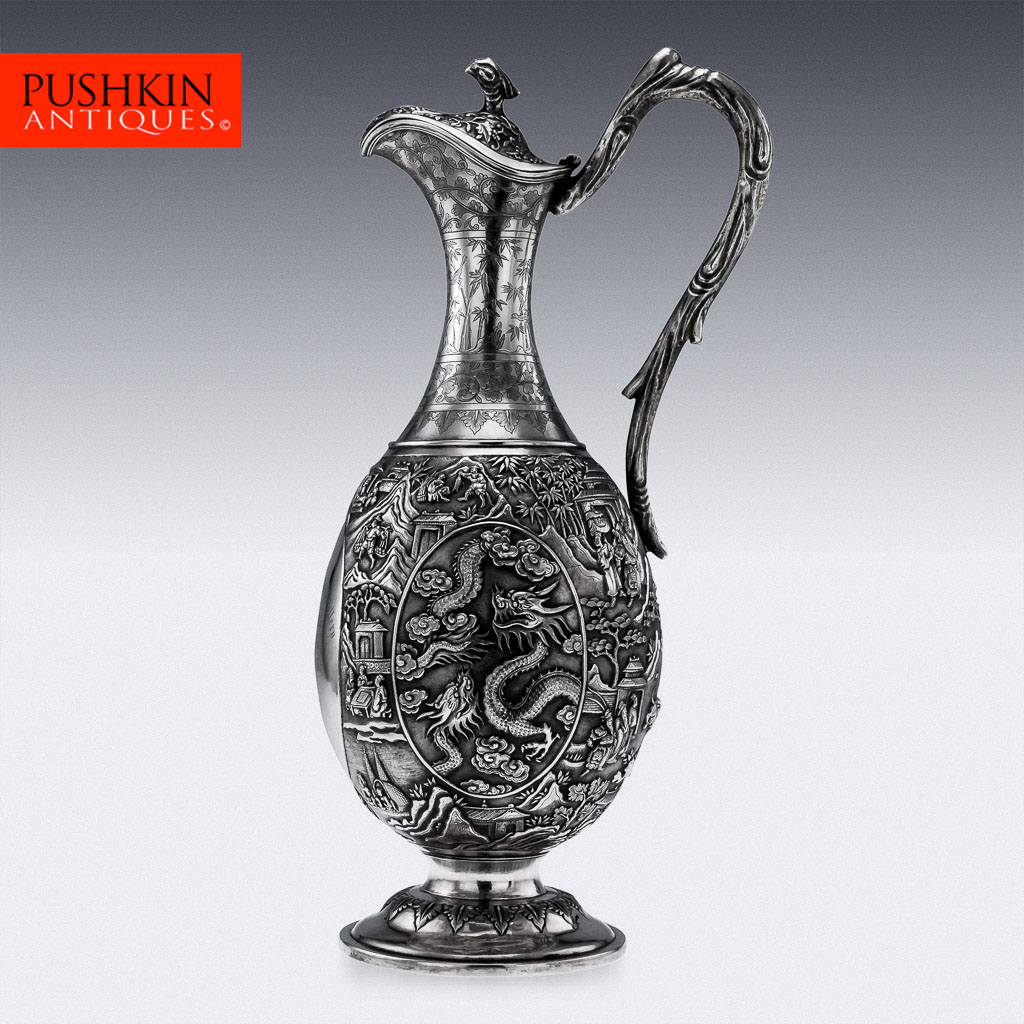
Chinese Silver
“Chinese Export Silver” refers to silverware produced in China from 1780 to the 1940’s. The name is somewhat misleading, since it is not silver that was produced exclusively for the West. All silver produced in China during this period bears the name, yet it is impossible to determine which items were specifically for the West.
This wide and complex silver-making period is best divided into four major manufacturing periods: “The Formative China Trade Period” (1685-1757), “The Early China Trade Period” (1757-1842), “The Late China Trade Period” (1842-1895) and “The Post China Trade & Republic Period” (1895-1940).
During the formative and early China trade periods, from early 18th century to the Treaty of Nanking (1842), a significant amount of Chinese silver was produced by Canton-based workshops. These pieces were often made in the neo-classical American and British Georgian styles and are distinguished by exceptionally heavy weight and high quality. This phenomenon rose out of the dramatic reduction of silver mining in South America, which in turn created a scarcity of silver in Britain and America. The silver workshops, in the main, remained anonymous to Westerners but the merchant shops they produced for have become well-known. Sun Shing and Lin Chong and others with undocumented full names, used to mark their silver with pseudo English marks (the most peculiar case is probably the maker “WE WE WC”, imitating the London hallmark of William Eley, William Fearn and William Chawner). It is not known quite why the “pseudo-hallmark” phenomenon happened; there are several conjectured reasons.
During the second half of 19th century the centres manufacturing silver wares multiplied (Shanghai, Jiujang, Tienstin, Beijing and Hong Kong above all) as a direct result of the Treaty of Nakning and the granting of treaty ports. Chinese silver came more and more into fashion as Chinese society in these cities gradually became Westernised and middle class. The fashion for the “oriental” in America and Europe made this silver popular and Western retail silversmiths regularly sold it. The production ranged from everyday items such as tea sets, jugs, mugs, bowls and boxes to exceptional and impressive trophies and presentation pieces, becoming more elaborate and intricately decorated, many with traditional Chinese motifs applied onto Western forms.
Some of the most common decorative elements to be found on Chinese silver of this period are bamboo leaves, chrysanthemums, orchids, plums, cranes, dragons and crowded figural scenes representing Immortals, gods and battles. To Western eyes, these are simply decorative; to Chinese eyes, every motif or combination of motifs convey a meaning.
The countless variations and imaginative use of the “dragon”, considered symbol of power and reference to the Emperor, became the most recognisable element distinguishing the late 19th century and early 20th century Chinese export silver. It became the signature of prolific silversmiths and retailers such as Wang Hing, Tuck Chang, Luen Wo, Leeching, Kwong Man Shing, Da Xing, Cumwo with Tu Mao Xing, a manufacturer and retailer, now considered the “king of dragon makers”. The silver marks commonly used on silver produced during this period have Chinese chop marks often combined with Latin alphabet initials. China has never had an assay system, so the information conveyed in the silver marks are minimal at best.
The post-China trade and Republic periods are characterised by the introduction of Western-style department in major cities, Hong Kong and Shanghai in particular. The rise of a Chinese middle class and an explosion of ex-pat residents in treaty ports and Hong Kong created the need for more commercial, but still high quality silver items.
During the Cultural Revolution and after, silver started to be produced by state-owned workshops and was simply stamped “MADE IN CHINA” and “SILVER”.
Often wrongly associated with Chinese export silver is Straits Chinese silver (circa 1835-1935), technically a silver category in its own right. It refers to the silverware produced by local and mainland Chinese workshops for Peranakan communities (descendants of Chinese immigrants) living in the Malay Archipelago, including Malaysia, Indonesia, Vietnam and Singapore. This type of silver is less influenced by Western styles, often incorporates Islamic-inspired or Buddhist motifs and generally carries Chinese chop marks.



















